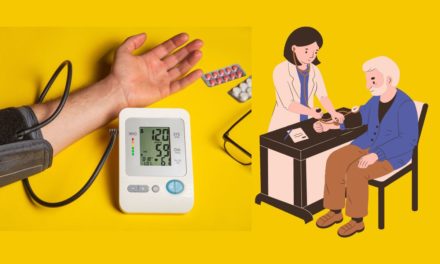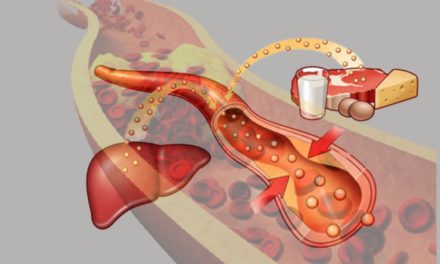Unraveling ischemic heart disease (IHD): understanding, treating and preventing the silent killer
Introduction:
Ischemic heart disease (IHD), also known as coronary artery disease, is a prevalent cardiovascular condition characterized by reduced blood flow to the heart muscle due to narrowed or narrowed coronary arteries. It is a leading cause of death worldwide, and its impact on individuals’ lives is profound. Understanding the nature of ischemic heart disease, recognizing its risk factors, and implementing appropriate treatment and prevention strategies are critical in managing the condition and promoting cardiovascular health. In this article, we delve into the world of ischemic heart disease, exploring its causes, treatment options, and preventative measures.
1. Understanding Ischemic Heart Disease:
Ischemic heart disease occurs when the coronary arteries, which supply oxygen and nutrients to the heart muscle, are narrowed or blocked by plaque buildup. This substance contains cholesterol, fat, calcium and other substances. As a result, blood flow to the heart muscle is restricted, leading to insufficient oxygen supply and various symptoms.
2. Causes and risk factors:
Several factors contribute to the development of ischemic heart disease:
- a Atherosclerosis: The primary cause of ischemic heart disease is atherosclerosis, a condition characterized by plaque buildup in the arteries. Risk factors for atherosclerosis include high blood pressure, high cholesterol levels (especially LDL cholesterol), smoking, diabetes, obesity, and a sedentary lifestyle.
- b Age and sex: The risk of ischemic heart disease increases with age, and men are more likely to develop it at an earlier age than women. After menopause, the risk for women is the same as for men.
- c Family history: Having a family history of ischemic heart disease, especially if a close relative developed it at a young age, increases the risk.
- d Lifestyle factors: Unhealthy lifestyle habits, such as poor dietary choices, lack of physical activity, excessive alcohol consumption, and smoking, contribute to the development of ischemic heart disease.
3. Symptoms and complications:
Symptoms of ischemic heart disease can vary from mild to severe, and some people may not experience symptoms until a significant blockage occurs. Common symptoms include:
- a Chest pain or discomfort (angina), which may be described as a feeling of squeezing, pressure, heaviness, or burning.
- b Shortness of breath during physical activity or at rest.
- c Fatigue, weakness, or light-headedness
- d Palpitations (irregular heartbeat) or fast heartbeat.
If left untreated, ischemic heart disease can lead to complications such as heart attack, heart failure, arrhythmia, or sudden cardiac death.
Treatment options:
Treatment for ischemic heart disease focuses on improving blood flow to the heart, relieving symptoms and preventing complications. The following methods are commonly used:
- a Lifestyle changes: Adopt a heart-healthy diet low in saturated fat, trans fats, and cholesterol with an emphasis on fruits, vegetables, whole grains, lean protein, and healthy fats. Regular physical activity, weight management, smoking cessation, stress reduction, and blood pressure control are important.
- b Medications: Health care professionals may prescribe medications to manage symptoms, lower cholesterol levels, control blood pressure, reduce the risk of blood clots, and improve heart function. can. These may include aspirin, beta blockers, statins, ACE inhibitors, and nitroglycerin.
- c Medical procedures: In more severe cases, medical procedures such as angioplasty and stenting, coronary artery bypass surgery, or other interventions may be necessary to restore blood flow to the heart.
Prevention Strategies:
Preventing ischemic heart disease involves adopting a heart-healthy lifestyle and managing risk factors:
- a Healthy diet: Eat a balanced diet rich in fruits, vegetables, whole grains, lean protein and healthy fats. Limit your intake of processed foods, saturated fats, trans fats and sodium.
- b Regular exercise: Engage in at least 150 minutes of moderate aerobic exercise per week as advised by a health care professional. Physical activity improves heart health, helps control weight, and reduces the risk of cardiovascular disease.
- c Smoking cessation: Quit smoking or avoid exposure to others. Smoking damages blood vessels, raises blood pressure, and accelerates the progression of atherosclerosis.
- d Weight management: Maintain a healthy weight through a balanced diet and regular physical activity.
- e Stress management: Adopt stress reduction techniques such as meditation, deep breathing exercises, regular exercise, and engaging in activities that promote relaxation and mental well-being.
- f Regular check-ups: Routine medical check-ups, blood pressure monitoring, cholesterol checks, and management are very important for early detection and management of diabetes risk factors.
Result:
Ischemic heart disease is an important and potentially life-threatening condition that requires attention and active management. By understanding its causes, recognizing the symptoms, and implementing appropriate treatment and prevention strategies, individuals can effectively manage the condition. can regulate and promote cardiovascular health. Adopting a heart-healthy lifestyle, getting regular medical check-ups, following prescribed medications, and managing risk factors are very important. By prioritizing prevention, raising awareness, and advocating for a healthier society, we can combat the silent threat of ischemic heart disease and ensure a better future for all.










